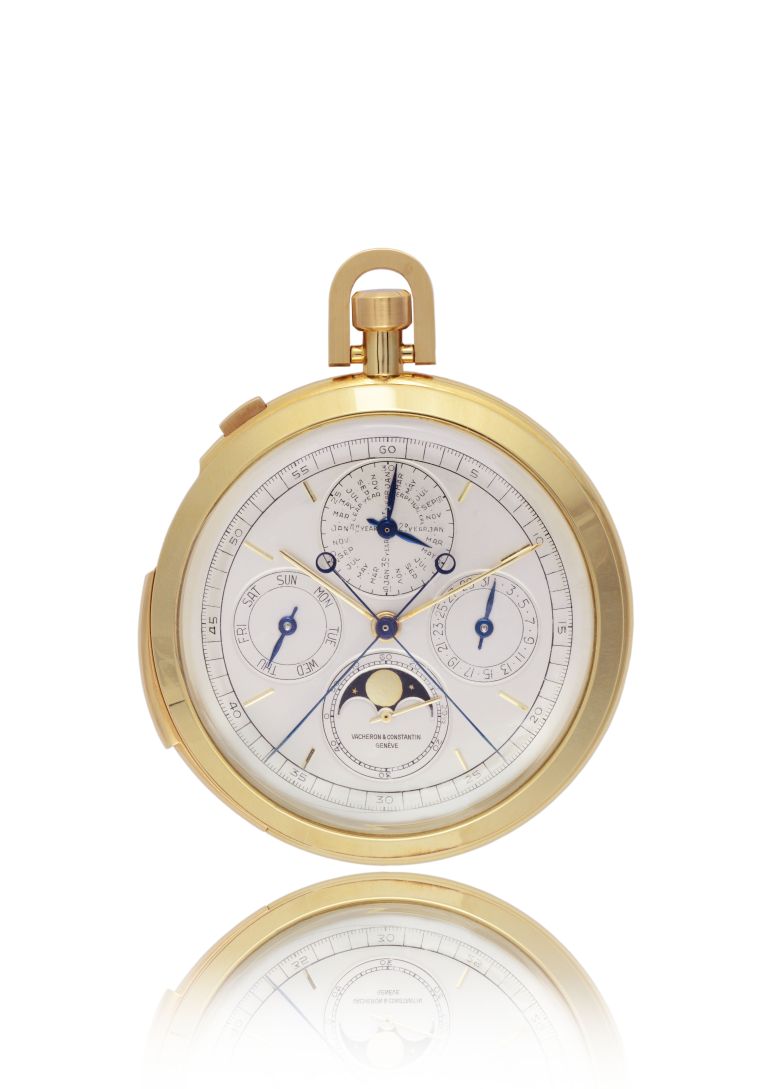
Vacheron Constantin is exhibiting a selection of models from its Heritage Private Collection, all featuring complications, mainly with retrograde and/or jumping indications. The exhibition will be held until 18 June in Milan (at the Vacheron Constantin Boutique on Via Pietro Verri 9) and from 22 to 29 June in Florence (at the Vacheron Constantin Boutique on the Ponte Vecchio, at number 52/R). The retrograde date display, which appeared in the 18th century and is sometimes accompanied by jumping indications, represents a technical difficulty requiring extreme precision. Vacheron Constantin introduced pocket watches with jumping indications as early as 1824, followed a century later by models with retrograde indications.

A retrograde indication is when the indicator does not complete a full revolution of the dial, but returns to the starting point and starts moving forward again after covering the measuring segment. It is generally a hand moving along an arc of a circle. In addition to retrograde indications dedicated to time cycles such as hours, minutes, seconds and date, there are also so-called 'jumping' indications, such as the power reserve. Jumping indications, on the other hand, were historically introduced in watchmaking first with jumping seconds (in the mid-18th century), then with jumping hours: these indications enjoyed their first great success in the 1820s, thanks to the famous window clocks, in which the numerical hour is indicated by a jumping disc at 12 o'clock, while the minutes are marked by a central hand, as in regulators.

In 1824, as mentioned, Vacheron Constantin presented its first creation with jumping hours. Jumping minutes also appeared shortly afterwards, visible through an aperture, with the seconds hand as the only element reminiscent of traditional watches. With the advent of wristwatches, the disc display of jumping hours, accompanied by continuous minutes, became widespread.

Retrograde indications experienced their first golden age at Vacheron Constantin from the 1920s until the 1930s. This period, dominated by Art Deco, was inclined to unleash imagination and extravagance: watches with unusual shapes became popular, and date displays with aperture appeared, as well as special indications, including jumping hours and retrograde minutes. One of the models that made Vacheron Constantin famous in these years was the 'Bras en l'Air' ('Arms in the Air') pocket watch of 1930, with a double retrograde display. By touching the button at 10 o'clock, the arms of an engraved and enamelled gold Chinese wizard rise to indicate the hours and minutes.

After the 1930s, there was a pause in the creation of special displays. At Vacheron Constantin, the passion for these displays was reborn in the 1990s, particularly with the Mercator launched in 1994. The company's designers were inspired by the indication of the aforementioned "Bras en l'Air, which they integrated into a much smaller wristwatch. With the advent of the new millennium, horological audacity has translated into greater freedom for dials and retrograde indications have now become an established part of Vacheron Constantin's collections. As in the case of Reference 57260, presented in 2015 on the occasion of Vacheron Constantin's 260th anniversary, and boasting a retrograde date and split-seconds chronograph with a double retrograde hand. This aesthetic signature is echoed in the new models launched this year, through the Overseas, Patrimony and Traditionnelle collections and through the unique Les Cabinotiers Dual Time Grand Complication model.



